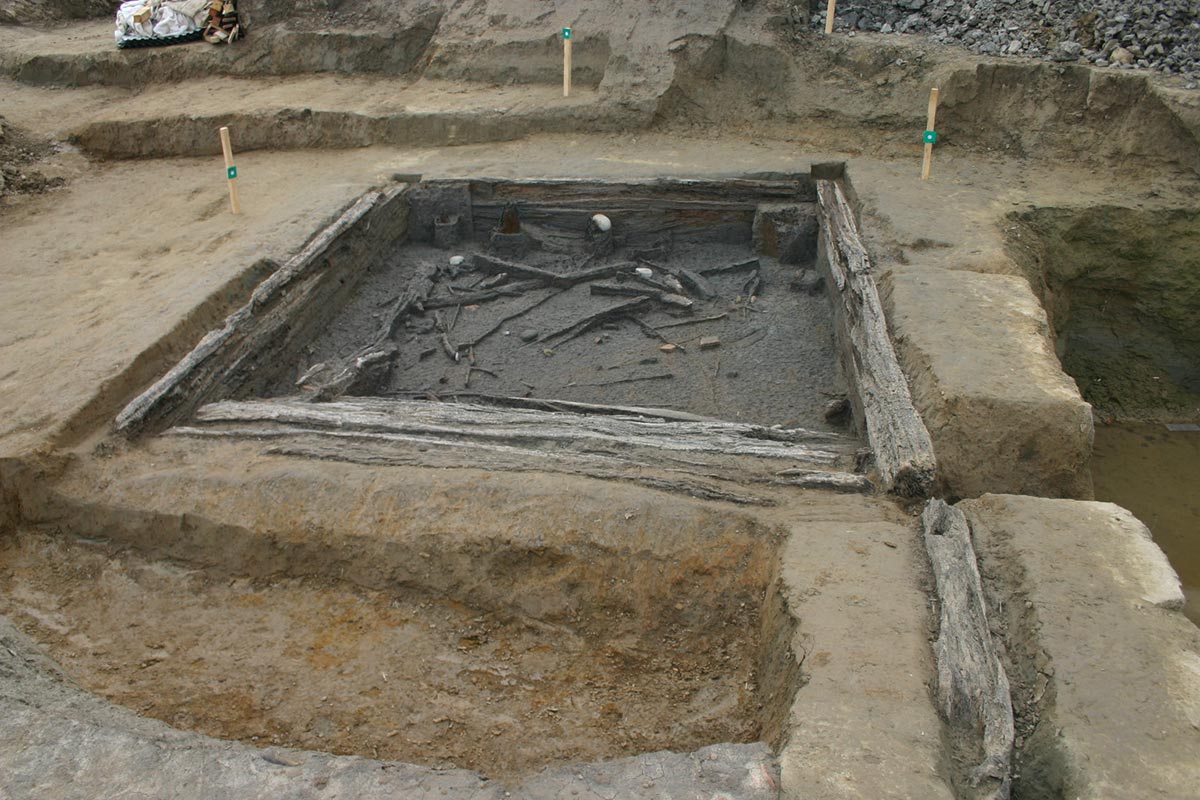REMOVAL AND PRELIMINARY ANALYSIS
– Wooden frame work support structure and swaddling with TNT (non woven fabric) 500g x sqm in several layers;
– Construction of a structural form made in polyurethene expansion material perfect for supporting the side of the waterlogged monument giving the stability necessary to guarantee correct pressure and avoid damaging the wooden surface;
– Realization of a grid below the wooden structure in order to support it and ensure the integrity of the find during the lifting phase and it’s removal from the site;
– Backing made of a length and thickness suitable to form a resistant structure in order to protect parts in bad condition;
– Coverage of the site, to keep the finds moist with a sprinkler system during the excavation;
– Anatomical chemical analysis and mechanical samples of woods;
– Dismantling of the structure and positioning in permeable material crates, slightly wet to better maintain the humidity of wood parameters.
RECOVERY AND RESTORATION
On arrival in the laboratory, all sludge, earth and debris was removed from the finds by means of delicate cleaning with a mist of deionized water and gentle brushing with soft brushes and cautious use of scalpels. Steel tanks were prepared for later treatment in liquid suitable to the finds. The tanks were fitted with stainless steel grids superimposed on one another to hold each dismantelled piece and these were provided with lifting hooks. The tanks were also equipped with pumps to keep the water circulating in alternate cycles with automatic control. Once the purification of finds was completed, the consolidation process of recovery began. This delicate phase was carried out by immersion of beams in a solution of natural sugar, the composition of which replaces the water molecules of the cellular structure in the wood and strengthens the whole. Once the consolidation process was completed the aesthetic appearance of each beam was checked to prepare it for eventual exhibition in a museum structure.


